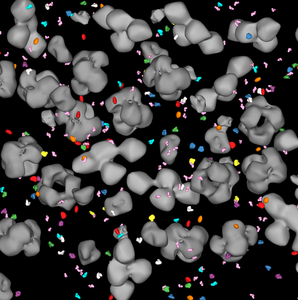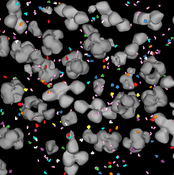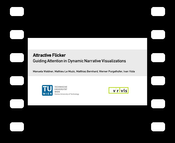Information
- Publication Type: Journal Paper with Conference Talk
- Workgroup(s)/Project(s):
- Date: December 2014
- Journal: IEEE Transactions on Visualization and Computer Graphics
- Volume: 20
- Number: 12
- Location: Paris, France
- Lecturer: Manuela Waldner
- Event: IEEE VIS 2014
- Conference date: 9. November 2014 – 14. November 2014
- Pages: 2456 – 2465
- Keywords: Narrative Visualization, Flicker, Visual Attention
Abstract
Focus+context techniques provide visual guidance in visualizations by giving strong visual prominence to elements of interest while the context is suppressed. However, finding a visual feature to enhance for the focus to pop out from its context in a large dynamic scene, while leading to minimal visual deformation and subjective disturbance, is challenging. This paper proposes Attractive Flicker, a novel technique for visual guidance in dynamic narrative visualizations. We first show that flicker is a strong visual attractor in the entire visual field, without distorting, suppressing, or adding any scene elements. The novel aspect of our Attractive Flicker technique is that it consists of two signal stages: The first “orientation stage” is a short but intensive flicker stimulus to attract the attention to elements of interest. Subsequently, the intensive flicker is reduced to a minimally disturbing luminance oscillation (“engagement stage”) as visual support to keep track of the focus elements. To find a good trade-off between attraction effectiveness and subjective annoyance caused by flicker, we conducted two perceptual studies to find suitable signal parameters. We showcase Attractive Flicker with the parameters obtained from the perceptual statistics in a study of molecular interactions. With Attractive Flicker, users were able to easily follow the narrative of the visualization on a large display, while the flickering of focus elements was not disturbing when observing the context.Additional Files and Images
Additional images and videos
 molecularScene:
Screenshot of the large molecular scene used in the final experiment
molecularScene:
Screenshot of the large molecular scene used in the final experiment
Additional files
Weblinks
BibTeX
@article{waldner-2014-af,
title = " Attractive Flicker: Guiding Attention in Dynamic Narrative
Visualizations",
author = "Manuela Waldner and Mathieu Le Muzic and Matthias Bernhard
and Werner Purgathofer and Ivan Viola",
year = "2014",
abstract = "Focus+context techniques provide visual guidance in
visualizations by giving strong visual prominence to
elements of interest while the context is suppressed.
However, finding a visual feature to enhance for the focus
to pop out from its context in a large dynamic scene, while
leading to minimal visual deformation and subjective
disturbance, is challenging. This paper proposes Attractive
Flicker, a novel technique for visual guidance in dynamic
narrative visualizations. We first show that flicker is a
strong visual attractor in the entire visual field, without
distorting, suppressing, or adding any scene elements. The
novel aspect of our Attractive Flicker technique is that it
consists of two signal stages: The first “orientation
stage” is a short but intensive flicker stimulus to
attract the attention to elements of interest. Subsequently,
the intensive flicker is reduced to a minimally disturbing
luminance oscillation (“engagement stage”) as visual
support to keep track of the focus elements. To find a good
trade-off between attraction effectiveness and subjective
annoyance caused by flicker, we conducted two perceptual
studies to find suitable signal parameters. We showcase
Attractive Flicker with the parameters obtained from the
perceptual statistics in a study of molecular interactions.
With Attractive Flicker, users were able to easily follow
the narrative of the visualization on a large display, while
the flickering of focus elements was not disturbing when
observing the context.",
month = dec,
journal = "IEEE Transactions on Visualization and Computer Graphics",
volume = "20",
number = "12",
pages = "2456--2465",
keywords = "Narrative Visualization, Flicker, Visual Attention",
URL = "https://www.cg.tuwien.ac.at/research/publications/2014/waldner-2014-af/",
}


 paper
paper Preview video
Preview video Submission video
Submission video


